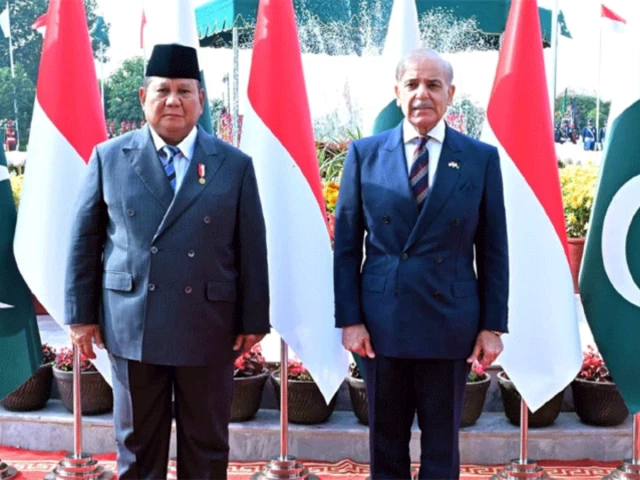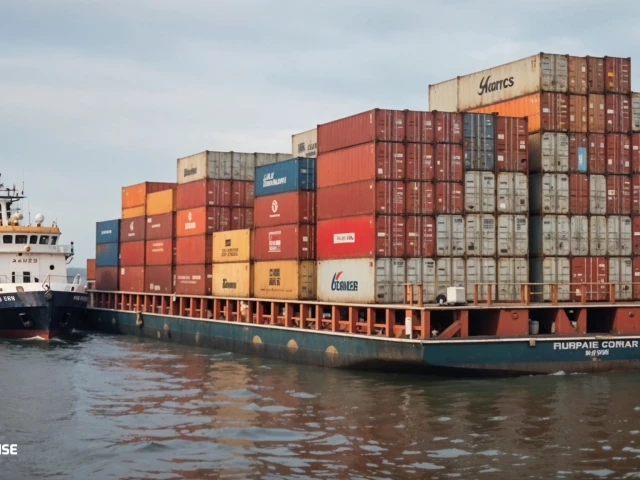Business
Illegal NBA gambling busts put sportsbooks on the defense

NBA and FanDuel online sports betting signage is displayed on the side of a building in Phoenix, Arizona, on June 5, 2024.
Patrick T. Fallon | AFP | Getty Images
“This is the insider trading saga for the NBA.”
That was FBI Director Kash Patel’s message at a news conference Thursday, announcing the arrests of Portland Trailblazers coach Chauncey Billups and Miami Heat player Terry Rozier.
The two were among more than 30 people charged in an illegal poker ring involving organized crime and cheating, according to prosecutors. The U.S. Attorney, FBI and other law enforcement agencies are also charging Rozier as well as former Cleveland Cavaliers player and assistant coach Damon Jones with a sports betting scheme to throw games or make illegal wagers on inside information.
It’s the kind of news that could prove damaging to the legal gambling industry — or, perhaps, a real opportunity.
Legal licensed sportsbooks in the U.S. have enjoyed massive growth in recent years, but they’re still trying to expand. The market leaders FanDuel, DraftKings, BetMGM and Caesars don’t have access to the two most populous states, California and Texas, because they have not legalized sports gambling.
When state lawmakers debate the pros and cons of legalizing sports betting, there are persistent questions about sports integrity and the opportunities for cheating. Players arrested on federal charges, accused of manipulating game play and profiting on illegal activity provide solid evidence for a sermon against the dangers of gambling.
The commercial gambling industry knows it. And it’s seizing the moment to reiterate its protections.
“Today’s events are deeply disturbing, and should concern fans, athletes, and everyone who loves sports and values integrity and fair play,” FanDuel, owned by Flutter, said in a statement to CNBC shortly after federal prosecutors and law enforcement wrapped up their news conference.
“We are unwavering in our commitment to rooting out abuses by those who seek to undermine fair competition and the games we love,” FanDuel said.
The American Gaming Association blasted out its statement: “Today’s revelations are a stark reminder of the pervasive and predatory illegal market, ensnaring countless individuals and operating in the shadows … It is important to recognize that the regulated legal market delivers transparency, oversight, and collaboration with authorities that assists in bringing these bad actors to light.”
A DraftKings spokesman told CNBC, “We fundamentally believe that regulated online sports betting is the best way forward, to monitor for and detect suspicious behavior.”
Sportsbooks and the integrity monitoring companies that work with them were involved in alerting authorities to unusually large wagers on Jontay Porter prop bets that resulted in Porter being banned for life from the NBA last year and convicted on federal charges.
Prosecutors say Porter’s activity was part of the same conspiracy ring operating between 2022 and 2024 that resulted in six arrests this week.
A rapid response from the sportsbooks with carefully crafted crisis communications messages could be designed to ward off threats from state gaming regulators to crack down on player props, which are often the basis of parlay bets.
Parlays, which combine several bet criteria into a single wager, are very profitable for the sportsbooks and popular with customers, even though there are lower chances of winning.
The negative headlines over illegal gambling could ultimately prove to be an opportunity in the long run for commercial and tribal casinos if it prompts more enforcement action against unlicensed operators.
After all, unlicensed gambling in the U.S. is estimated to bring in $674 billion in wagers annually, the AGA said in August.
Business
RBI Holds 879.6 Tonnes Of Gold As Prices Surge Amid Global Uncertainty

New Delhi: The Reserve Bank of India, as on March 31 this year, held 879.58 metric tonnes of gold as compared to 822.10 metric tonnes as on March 31, 2024, reflecting an increase of 57.48 metric tonnes, the Parliament was informed on Monday.
These gold holdings contribute to strengthening confidence in the Indian rupee and the overall external stability of the economy, Minister of State for Finance Pankaj Chaudhary told the Lok Sabha in a reply to a question.
To questions about the surge in gold and silver prices in the domestic market, he said that domestic prices of precious metals like gold and silver are primarily determined by their prevailing international prices (in US dollar terms), the exchange rate of the Indian rupee against the US dollar and applicable tariffs.
The recent surge in prices is largely attributable to heightened geopolitical tensions and uncertainty over global growth, which have boosted safe-haven demand, including substantial gold purchases by central banks and major institutions worldwide.
The minister said that the recent rally in gold prices may have differential effects across states or population groups, depending upon the degree of socio-cultural and economic reliance on these precious metals.
“They serve a dual role — not only as a consumption item but also as an investment avenue, as they are considered safe assets for hedging against uncertainties,” he said.
Thus, an increase in the price of gold or silver positively influences household wealth, as the notional value of existing gold or silver holdings appreciates, he added. Chaudhary further stated that the prices of precious metals are determined by the market, and the government is not involved in the price fixation.
However, the government, as a relief measure for consumers, lowered customs duty on gold imports from 15 to 6 per cent in July 2024.
The government introduced measures such as the Gold Monetisation Scheme (GMS), Gold exchange‑traded funds (ETFs) and Sovereign Gold Bond Scheme to reduce the demand for physical gold and to mobilise idle domestic gold, so that part of the demand is met from local stocks rather than fresh imports, thereby reducing external vulnerability and price pressures.
“The RBI and government regulation of bullion imports through nominated agencies, banks and refineries improve traceability, reduce grey‑market channels and help domestic prices more smoothly track global benchmarks rather than react to shortages or speculative spikes,” the minister said.
Business
Mercosur hurdle: French objections and farm protests freeze EU trade deal; Brussels faces credibility test – The Times of India

France’s last-minute opposition and mounting farmer protests are threatening to derail the European Union’s long-delayed free-trade agreement with South America’s Mercosur bloc, raising fresh doubts over whether the pact can be signed this year, AP reported.Angry European farmers, fearing cheaper agricultural imports and tougher competition, have taken to the streets in Brussels just as EU negotiators were hoping to close a deal that has taken nearly 25 years to negotiate. The agreement involves the 27-country EU and five Mercosur nations — Brazil, Argentina, Uruguay, Paraguay and Bolivia — and would gradually remove duties on most goods traded between the two blocs over 15 years.The accord, agreed in principle a year ago, still needs approval from all EU member states and the European Parliament. EU officials had planned for European Commission President Ursula von der Leyen and European Council President António Costa to sign the deal in Brazil on December 20, but growing resistance now threatens that timeline.French Prime Minister Sébastien Lecornu said on Sunday that the current deal was “unacceptable” and that the “conditions have not been met” for EU leaders to authorise its signing this week, effectively seeking a delay that could push the decision to 2026 or later. While acknowledging steps taken by the European Commission to protect farmers and tighten food safety checks, Lecornu said France remained unconvinced.Poland, Austria, the Netherlands and France fear Mercosur exporters could undercut EU farmers who operate under stricter labour, environmental and sanitary rules, including pesticide restrictions, analysts told AP. France has been pressing for “mirror clauses” that would require Mercosur producers to meet the same standards — demands that have not been fully accepted.Alicia Gracia-Herrero, a senior fellow at the Brussels-based Bruegel Institute, said the standoff exposed limits to the EU’s political unity and global influence. “If we cannot get this done even with (US President Donald) Trump’s pressure, what can you expect from the EU?” she said, warning that further delays could undermine Brussels’ credibility in talks with partners such as Indonesia and India.The deal comes at a sensitive time for the EU, which has been seeking to diversify trade ties after Trump imposed tariffs of 15% on most EU imports earlier this year, AP reported. Brussels sees the Mercosur pact as a strategic counterweight to aggressive trade tactics by both the US and China.European Commission spokesperson Olof Gill said the bloc is pushing to conclude the agreement by year-end, arguing it would strengthen the EU’s geopolitical standing. “We’re talking about bringing together two of the world’s biggest trading blocs,” he said, citing cooperation on climate, economic security and reform of the global rules-based order.Agriculture remains central to the dispute. The EU exported 235.4 billion euros ($272 billion) worth of agricultural goods in 2024, and critics warn the deal could hurt local dairy and beef producers and cause environmental damage. Supporters counter that it would save businesses about $4.26 billion in duties annually and open markets for products ranging from French wine to German pharmaceuticals and Brazilian minerals.To calm opposition, the European Commission has proposed safeguards, including mechanisms allowing farmers to trigger investigations if Mercosur imports are priced at least 10% below EU products, tighter border inspections for banned pesticides, and reforms to distribute agricultural subsidies more equitably.These measures, however, have failed to ease French concerns or quell farmer anger. Agricultural unions are again planning demonstrations in Brussels as EU leaders meet later this week, underlining the political risks surrounding a deal that was once seen as a cornerstone of the bloc’s trade strategy.
Business
‘Can a dead economy grow at 8.2%?’: FM Sitharaman rebuts Trump remark in Lok Sabha; cites IMF ratings upgrade – The Times of India

Finance Minister Nirmala Sitharaman on Monday cited India’s strong growth and sovereign rating upgrades to counter claims that the country was a “dead economy”, telling the Lok Sabha that such upgrades would not have been possible if the economy were weak, PTI reported.Responding to Opposition members who sought the government’s reaction to US President Donald Trump’s description of India as a “dead economy”, Sitharaman said India remains the fastest-growing major economy, recording 8.2% growth in the September quarter.“The economy in the last 10 years has transitioned from external vulnerability to external resilience,” the minister said while replying to the Supplementary Demands for Grants for 2025-26 in the House.“Every institution is raising our growth outlook for this year and the forthcoming year. There are clear expressions (from the IMF) recognising India’s growth and no dead economy gets a credit rating upgrade by DBRS, S&P and R&I,” Sitharaman said.Trump had made the “dead economy” remark in July while expressing disappointment with India’s decision to continue buying oil from Russia. Sitharaman said data and assessments by global institutions contradicted that characterisation.“The economy today has moved from fragility to fortitude,” she said.“So somebody said something somewhere, however important that somebody is, we should not depend on that but rely on data available within the country and also data coming from elsewhere. Rely on data,” she told Opposition members.“Can a dead economy grow at 8.2%? Can a dead economy get credit rating upgrades?” Sitharaman asked.The Reserve Bank of India last week raised its GDP growth projection for FY26 to 7.3% from 6.8% earlier. India grew 8.2% in the September quarter and 7.8% in the June quarter.On concerns raised over the International Monetary Fund’s assessment of India’s national accounts — including Gross Domestic Product (GDP) and Gross Value Added (GVA) — Sitharaman said India’s overall grading remains unchanged at the median rating of ‘B’.She said the IMF had flagged the outdated base year for national accounts and suggested rebasing. “So to say that there has been a downgrade by IMF is misleading the House. For this year, IMF gave B for overall statistics,” she said, adding that India has remained the fastest-growing major economy for the fourth consecutive year despite the pandemic.Sitharaman also addressed concerns over public debt, saying India’s debt-to-GDP ratio rose to 61.4% after Covid but was brought down to 57.1% by 2023-24 due to policy measures taken by the central government.“By this year-end, I expect it to come down to 56.1%,” the finance minister said.
-

 Politics1 week ago
Politics1 week agoThailand launches air strikes against Cambodian military: army
-

 Politics1 week ago
Politics1 week agoZelenskiy says Ukraine’s peace talks with US constructive but not easy
-

 Fashion1 week ago
Fashion1 week agoGermany’s LuxExperience appoints Francis Belin as new CEO of Mytheresa
-

 Politics5 days ago
Politics5 days agoTrump launches gold card programme for expedited visas with a $1m price tag
-

 Tech6 days ago
Tech6 days agoJennifer Lewis ScD ’91: “Can we make tissues that are made from you, for you?”
-

 Politics1 week ago
Politics1 week ago17 found dead in migrant vessel off Crete: coastguard
-

 Business5 days ago
Business5 days agoRivian turns to AI, autonomy to woo investors as EV sales stall
-

 Entertainment1 week ago
Entertainment1 week agoToo big to fail? IndiGo crisis exposes risks in Indian aviation















